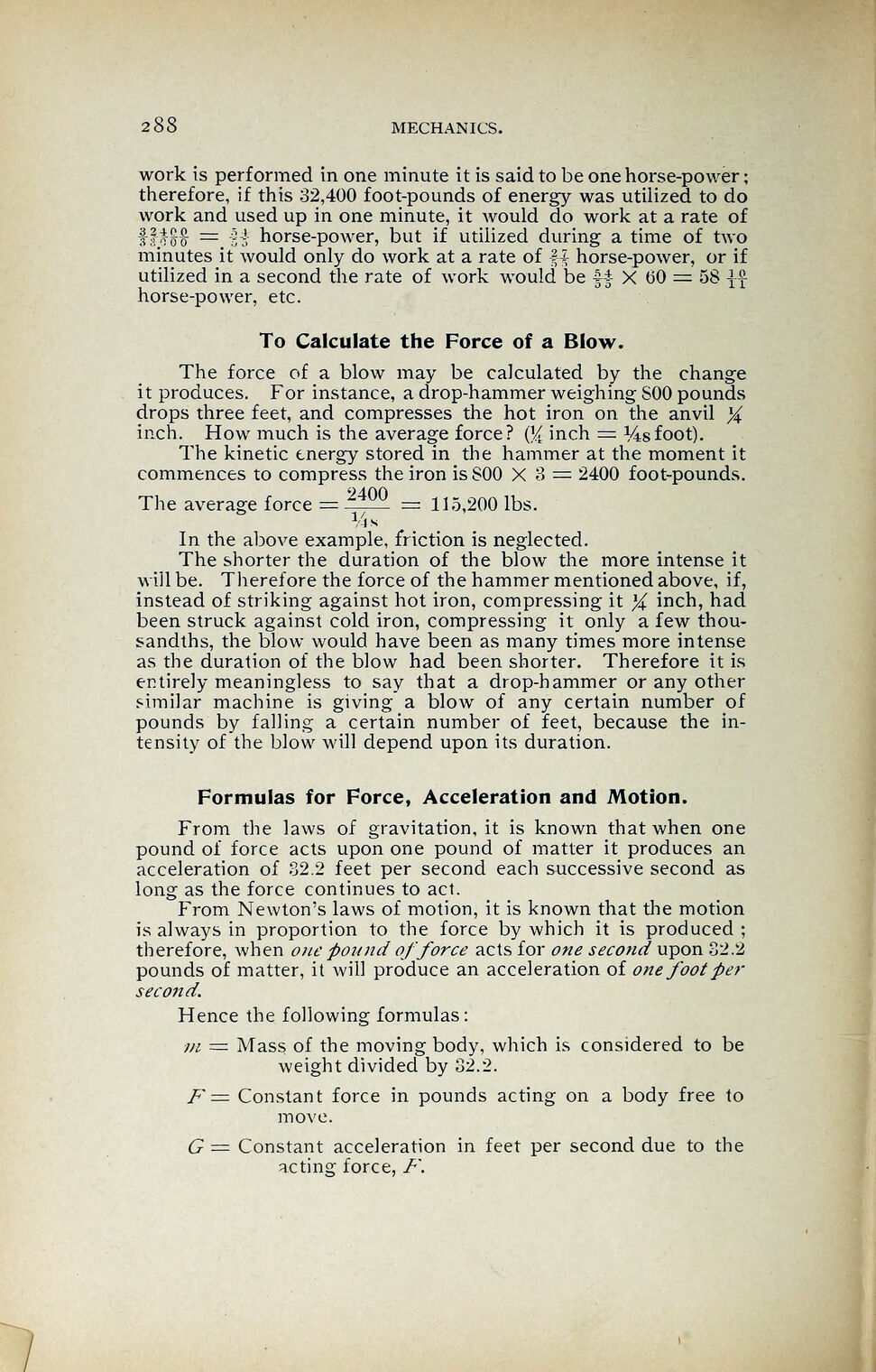
Full resolution (JPEG) - On this page / på denna sida - Mechanics - Kinetic energy - To calculate the force of a blow - Formulas for force, acceleration and motion

<< prev. page << föreg. sida << >> nästa sida >> next page >>
Below is the raw OCR text
from the above scanned image.
Do you see an error? Proofread the page now!
Här nedan syns maskintolkade texten från faksimilbilden ovan.
Ser du något fel? Korrekturläs sidan nu!
This page has never been proofread. / Denna sida har aldrig korrekturlästs.
2 88 MECHANICS.
work is performed in one minute it is said to be one horse-power
;
therefore, if this 32,400 foot-pounds of energy was utilized to do
work and used up in one minute, it would do work at a rate of
fff§# = 5-*- horse-power, but if utilized during a time of two
minutes it would only do work at a rate of |i horse-power, or if
utilized in a second the rate of work would be $£ X 60 — 58 jf
horse-power, etc.
To Calculate the Force of a Blow.
The force of a blow may be calculated by the change
it produces. For instance, a drop-hammer weighing S00 pounds
drops three feet, and compresses the hot iron on the anvil %
inch. How much is the average force? (% inch — *4sfoot).
The kinetic energy stored in the hammer at the moment it
commences to compress the iron is S00 X 3 = 2400 foot-pounds.
The average force = 2400
= 115,200 lbs.
Vl N
In the above example, friction is neglected.
The shorter the duration of the blow the more intense it
will be. Therefore the force of the hammer mentioned above, if,
instead of striking against hot iron, compressing it X inch, had
been struck against cold iron, compressing it only a few thou-
sandths, the blow would have been as many times more intense
as the duration of the blow had been shorter. Therefore it is
entirely meaningless to say that a drop-hammer or any other
similar machine is giving a blow of any certain number of
pounds by falling a certain number of feet, because the in-
tensity of the blow will depend upon its duration.
Formulas for Force, Acceleration and Motion.
From the laws of gravitation, it is known that when one
pound of force acts upon one pound of matter it produces an
acceleration of 32.2 feet per second each successive second as
long as the force continues to act.
From Newton’s laws of motion, it is known that the motion
is always in proportion to the force by which it is produced ;
therefore, when one pound offorce acts for one second upon 32.2
pounds of matter, it will produce an acceleration of one foot per
second.
Hence the following formulas:
m = Mass of the moving body, which is considered to be
weight divided by 32.2.
F = Constant force in pounds acting on a body free to
move.
G = Constant acceleration in feet per second due to the
acting force, F.
<< prev. page << föreg. sida << >> nästa sida >> next page >>